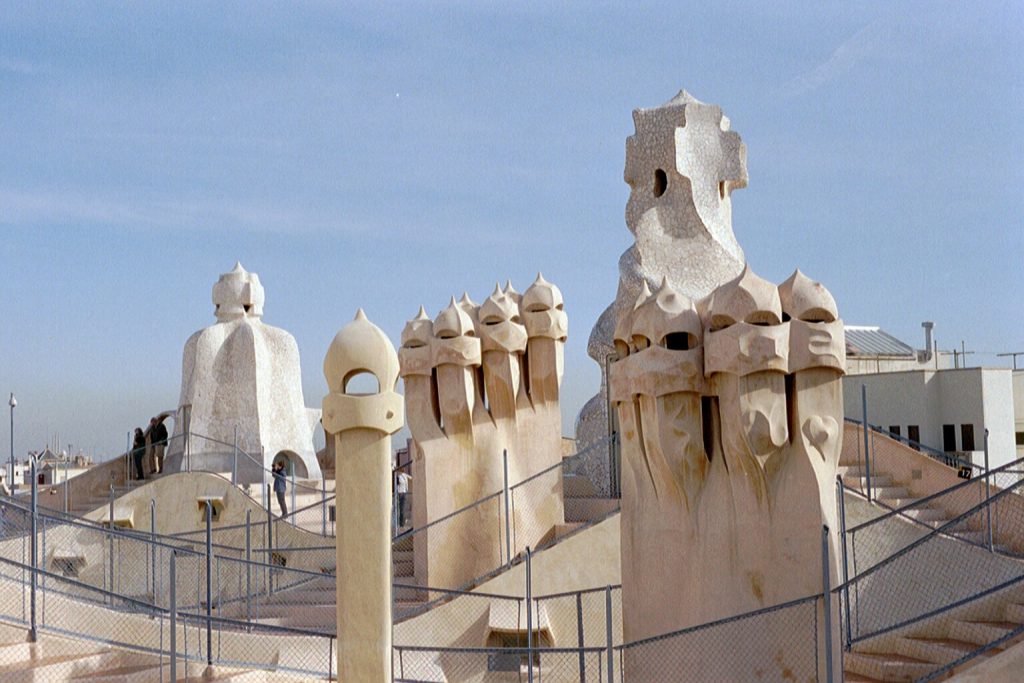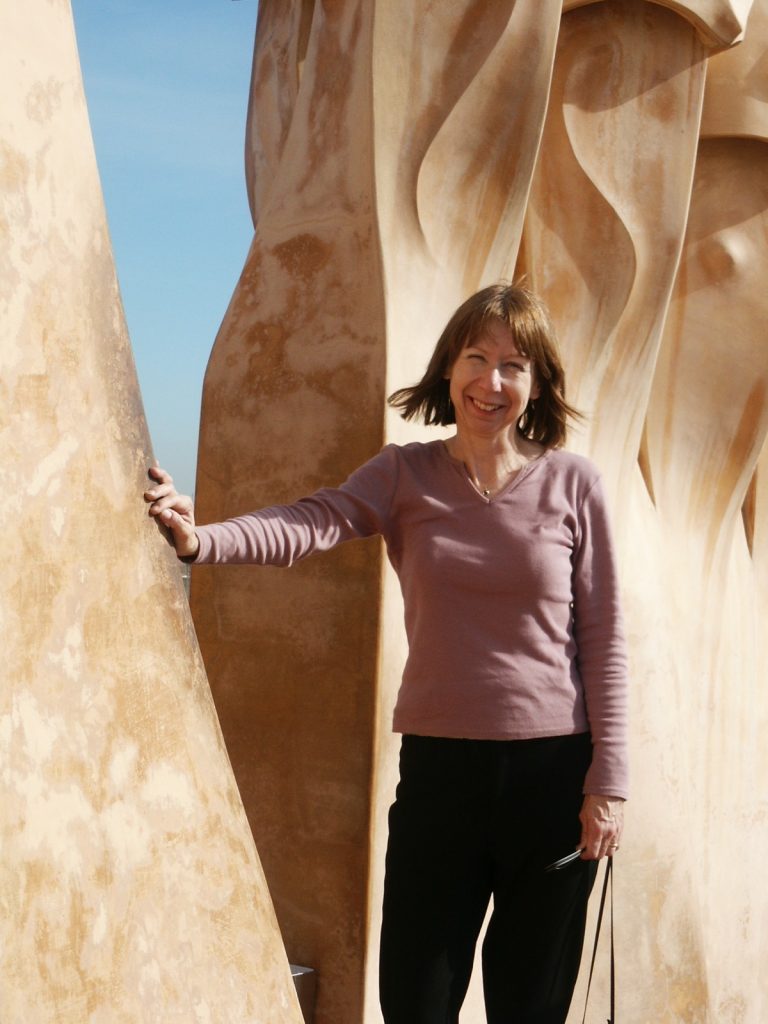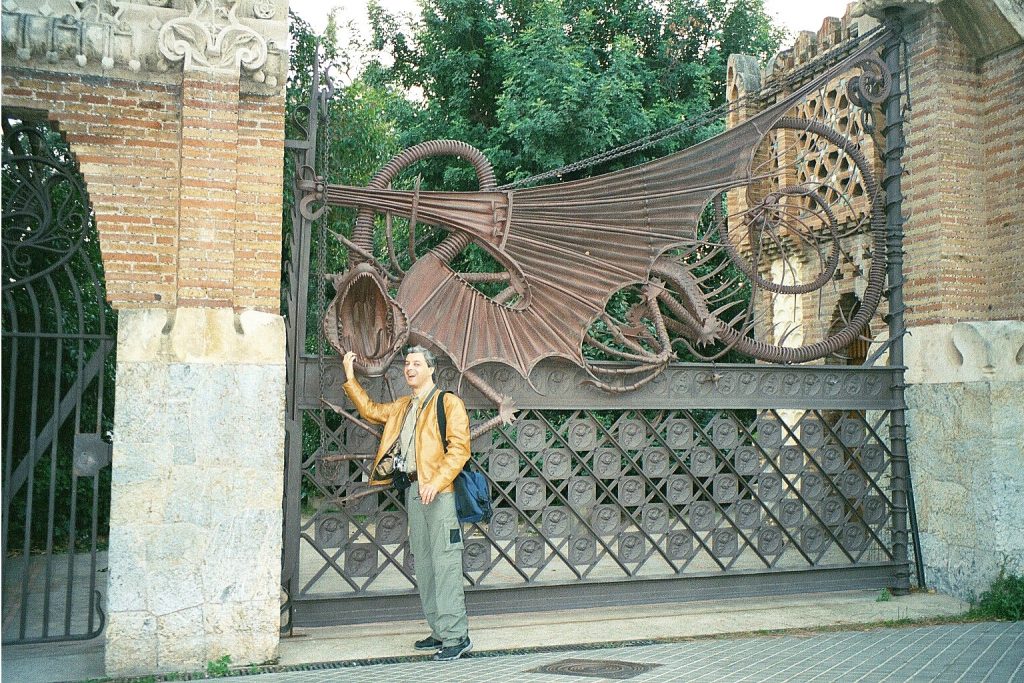Gaudi Architecture
Gaudi is synonymous with the architecture of Barcelona. Surely the most imaginative and creative architect in the world in the late 19th and early 20th centuries (IMHO).

This is Casa Mila – also known as La Pedrera.
A multi-purpose building. There is a sample flat to visit, which is very open plan – with room dividers, depending how the occupants want to use the space.
Everything about Casa Mila was an adventure to explore. This is the attic space.

However this building is most famous for the chimneys on the roof. You can see why. The photo on the left is of one of the air vents



Casa Calvert

Casa Batlo

Casa Batlo is one of Gaudi’s most colourful buildings, nicknamed the “House of Bones”.
The roofs are fantastically well decorated.

Casa Vicens, one of Gaudi’s early houses showing a strong Moorish influence.

Guell Pavilions. Gaudi even designed this Dragon-gate. As it swings open, the dragon’s jaws close.

Palau Guell. Gaudi did a lot of work for the Guell family. This is the upper part of the family’s main home. Again the roof is a must to explore.


Park Guell. This is the entrance to the park. Originally Gaudi had planned to build a large number of mansions within it. In the end only a couple were completed. Would you want to live in a Theme Park with visitors looking in all the time? On the right below is the Salamander fountain. The park is awash with such follies. Great for photos, though!




There were good views of the city from the Park Guell. I like the fairy-tale houses in the foreground. Almost edible.

Sagrada Familia. This church is still incomplete after over a century. Its bell towers are the modern icons of Barcelona. A very inspiring building. It is financed entirely from donations.

The external decorations seem to have been squeezed out of the fabric of the East façade (left below). I kept on thinking that the statues were somehow alive and moving. The Passion sculptures were erected in 1990, over 60 years after Gaudi died. These are in marked contrast to the earlier sculptural style of the East façade.


